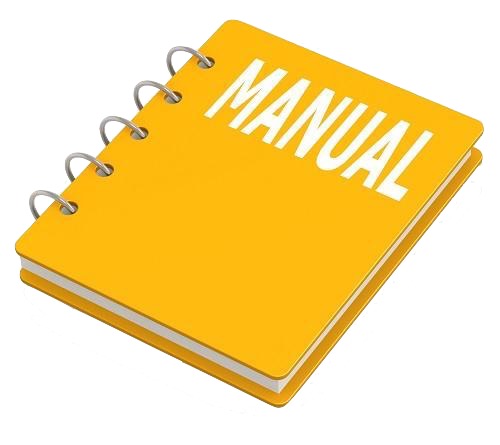
INSTANT DOWNLOAD (add to cart)
Nissan Almera Classic, Almera Tino (N15/N16/B10/V10) Factory Service & Shop Manual
Complete workshop & service manual with electrical wiring diagrams for Nissan Almera Classic, Almera Tino (N15/N16/B10/V10). It’s the same service manual used by dealers that guaranteed to be fully functional and intact without any missing page.
Nissan Almera Classic, Almera Tino (N15/N16/B10/V10) service & repair manual (including maintenance, overhaul, disassembling & assembling, adjustment, tune-up, operation, inspecting, diagnostic & troubleshooting…) is divided into different sections. Each section covers a specific component or system with detailed illustrations. A table of contents is placed at the beginning of each section. Pages are easily found by category, and each page is expandable for great detail. The printer-ready PDF documents work like a charm on all kinds of devices.
1.4 GB, 10,000+ pages, bookmarked, Searchable, Printable, high quality PDF
QUICK REFERENCE INDEX
GENERAL INFORMATION – GI
MAINTENANCE – MA
ENGINE MECHANICAL – EM
ENGINE LUBRICATION & COOLING SYSTEMS – LC
ENGINE CONTROL SYSTEM – EC
ACCELERATOR CONTROL, FUEL & EXHAUST SYSTEMS – FE
5MT – CLUTCH CL – 5MT
6MT – CLUTCH CL – 6MT
5MT – MANUAL TRANSAXLE MT – 5MT
6MT – MANUAL TRANSAXLE MT – 6MT
AUTOMATIC TRANSAXLE – AT
FRONT & REAR AXLE – AX
FRONT & REAR SUSPENSION – SU
BRAKE SYSTEM – BR
STEERING SYSTEM – ST
RESTRAINT SYSTEM – RS
BODY & TRIM – BT
AUTOMATIC AIR CONDITIONER – ATC
STARTING & CHARGING SYSTEMS – SC
ELECTRICAL SYSTEM – EL
ALPHABETICAL INDEX – IDX
EXCERPT:
Precautions
PRECAUTIONS
I When installing each rubber part, final tightening must be carried out under unladen condition* with tires on ground.
Oil will shorten the life of rubber bushes. Be sure to wipe off any spilled oil.
*: Fuel, radiator coolant and engine oil full. Spare tire, jack, hand tools and mats in designated positions.
I Use flare nut wrench when removing or installing brake tubes.
I After installing removed suspension parts, check wheel alignment.
I Do not jack up at the trailing arm and lateral link.
I Always torque brake lines when installing.
I Lock nuts are unreusable parts; always use new ones.
When replacing, do not wipe the oil off of the new lock nut before tightening.
…
QUICK REFERENCE INDEX
GENERAL INFORMATION GI
MAINTENANCE MA
ALMERA ENGINE MECHANICAL EM
MODEL N15 SERIES ENGINE LUBRICATION &
COOLING SYSTEMS LC
ENGINE CONTROL SYSTEM EC
ACCELERATOR CONTROL,
FUEL & EXHAUST SYSTEMS FE
CLUTCH CL
MANUAL TRANSAXLE MT
AUTOMATIC TRANSAXLE AT
FRONT AXLE & FRONT SUSPENSION FA
REAR AXLE & REAR SUSPENSION RA
BRAKE SYSTEM BR
STEERING SYSTEM ST
RESTRAINT SYSTEM RS
BODY & TRIM BT
HEATER & AIR CONDITIONER HA
ELECTRICAL SYSTEM EL
ALPHABETICAL INDEX IDX
VALVE Oil SEAL
1. Remove rocker cover.
2. Remove camshaft.
3. Remove valve spring. Refer to “CYLINDER HEAD”.
4. Remove valve oil seal with a suitable tool.
Piston concerned should be set at TOC to prevent valve from falling.
5. Apply engine oil to new valve oil seal and install it with Tool.
Be Remove the following parts: Engine undercover, Right-side splash cover, Alternator and power steering drive belts, Crankshaft pulley.
Remove front oil seal from front cover. Careful not to damage oil seal portion.
…
Fuel Line Inspection
Make sure that fuel line, fuel filler cap and fuel tank are at- tached correctly. If there is tremble or dir, repair or replace them.
Removal • Installation
WARNING:
When replacing the fuel line part, observe the followings:
Put a “CAUTION: INFLAMMABLE” sign in the workshop.
Be sure to work in a well ventilated area and to furnish workshop with a CO2 fire extinguisher.
Do not smoke while working on the fuel system. Also, work in location without any fire.
WARNING:
Use the following procedure before removing the fuel line parts.
a) Drain engine oil to the anti-explosible container and close it tight.
b) Release fuel pressure from the fuel line. Refer to “FUEL PRESSURE RELEASE” (QG16: EC-26).
c) Disconnect the battery negative cable.
Always replace O-ring with a new one.
Do not install the fuel tube twisted.
Do not tighten the hose clamp excessively. The fuel hose can be damaged.
Make sure that there are no fuel leaks at the fuel system connections while the engine is running after installing the fuel tube.
a) Turn the ignition switch ON (engine not running) and generate the fuel pressure in the fuel line.
Also, make sure that are no fuel leaks at the connec- tions.
b) Start engine, rev it up and make sure there are no fuel leaks at the fuel system connections.
Use only NISSAN Geunuine part when replacing the fuel filler cap.
…
